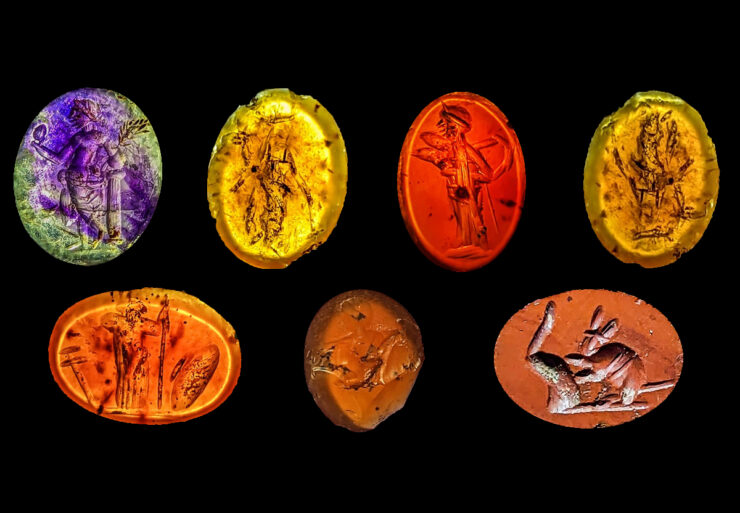Around Hadrian’s wall, archaeologists excavating in Carlisle, England, found 2,000-year-old engraved gems.
Following the original discovery of a Roman bath house by Wardell Armstrong archaeologists in 2017, the Uncovering Roman Carlisle project has been conducting a community-supported excavation at the Carlisle Cricket Club.
The bathhouse is situated close to the Petriana or Uxelodunum (meaning “high fort”) Roman fort in the Carlisle neighborhood of Stanwix. To maintain control over the areas west of modern-day Carlisle and the crucial River Eden bridge, Uxelodunum was built.
According to the news of Heritage Daily, it was situated behind the Hadrianic wall, whose long axis ran alongside to it and served as its northern defenses. The Ala Petriana, a cavalry troop of 1,000 soldiers who were all given Roman citizenship for their valor on the battlefield, guarded the fort.
The bath house has already been excavated, revealing a number of rooms, a hypocaust system, terracotta water pipes, undamaged flooring, painted tiles, and cooking pot fragments. Many high-ranking troops or Roman aristocracy lost the engraved jewels while bathing in its warm waters, which were subsequently drained down the drains when the pools were cleaned. The bath house was utilized by the soldiers for amusement and bathing.
The intaglios, or etched gems, which include an amethyst showing Venus holding a flower or a mirror and a red-brown jasper with a satyr, are thought to have been created in the late 2nd or early 3rd century AD.
“You don’t find such gems on low-status Roman sites. So, they’re not something that would have been worn by the poor. Some of the intaglios are minuscule, around 5mm ; 16mm is the largest intaglio. The craftsmanship to engrave such tiny things is incredible.” said Frank Giecco from Wardell Armstrong.
More than 40 women’s hairpins, 35 glass beads, a clay Venus figure, animal bones, and imperial-stamped tiles were also discovered during the excavations, indicating that the bathhouse was a grand structure used by the Roman elite who lived nearby the fort as well as the fort of Luguvalium, which was once beneath Carlisle Castle and was used by the garrison of Uxelodunum.
Cover photo: Anna Giecco
